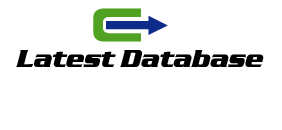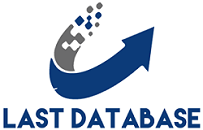Understanding Lead Generation and Prospecting
H2: What is Lead Generation?
Lead generation involves attracting and capturing the interest of potential customers, known as leads, to develop a sales pipeline. It is the first step in the sales process, aiming to gather information about prospects who have shown interest in your products or services.
H3: Key Elements of Lead Generation
Attracting Attention:
Element: Use various marketing tactics such as content marketing, social media, SEO, and paid advertising to attract potential customers to your website or landing pages.
Tip: Create compelling and valuable content that addresses the needs and pain points of your target audience.
Capturing Information:
Element: Utilize forms, sign-up sheets, and lead magnets (e.g., eBooks, whitepapers) to capture contact information from interested prospects.
Tip: Ensure your forms are simple and ask for only essential information to increase conversion rates.
Prospecting: The Next Step
H2: What is Prospecting?
Prospecting is the process of identifying and qualifying potential customers (prospects) who are likely to buy your products or services. It involves researching and reaching out to these individuals to move them further down the sales funnel.
H3: Techniques for Effective Prospecting
Research and Identification:
Technique: Use tools like LinkedIn, industry reports, and company websites Phone Number Lists
to research and identify potential prospects who fit your ideal customer profile.
Tip: Create a detailed prospect list based on criteria such as industry, company size, job title, and geographic location.
Cold Outreach:
Technique: Reach out to prospects via cold emails, phone calls, and social media messages to introduce your offerings and gauge their interest.
Tip: Personalize your outreach efforts by referencing specific details about the prospect's company or challenges they may be facing.
Integrating Lead Generation and Prospecting
H2: Creating a Seamless Process
Aligning Marketing and Sales:
Integration: Ensure your marketing and sales teams are aligned and working together to create a seamless lead generation and prospecting process.
Tip: Use a Customer Relationship Management (CRM) system to track leads and ensure smooth handoffs between marketing and sales.
Lead Scoring and Qualification:
Integration: Implement lead scoring to prioritize leads based on their likelihood to convert. Use criteria such as engagement level, demographics, and firmographics to assign scores to leads.
Tip: Focus your prospecting efforts on high-scoring leads to maximize efficiency and increase conversion rates.
Best Practices for Lead Generation and Prospecting
H2: Lead Generation Best Practices
Content Marketing:

Practice: Develop a content marketing strategy that includes blog posts, videos, webinars, and infographics to attract and engage potential leads.
Tip: Optimize your content for search engines (SEO) to increase visibility and drive organic traffic to your website.
Landing Pages:
Practice: Create dedicated landing pages for your campaigns with clear and compelling calls-to-action (CTAs) to capture lead information.
Tip: A/B test different elements of your landing pages (e.g., headlines, images, CTAs) to identify what works best.
H3: Prospecting Best Practices
Personalization:
Practice: Personalize your outreach messages based on the prospect's interests, industry, and specific challenges they may be facing.
Tip: Use tools like LinkedIn Sales Navigator to gather insights about your prospects and tailor your messages accordingly.
Follow-Up:
Practice: Implement a follow-up strategy to nurture prospects who have shown interest but have not yet converted.
Tip: Use a mix of email, phone calls, and social media interactions to stay top-of-mind and build relationships with prospects.
Tools and Technologies
H2: Leveraging Technology
CRM Systems:
Tool: Use CRM systems like Salesforce, HubSpot, or Zoho CRM to manage leads and track interactions throughout the sales process.
Tip: Ensure all team members are trained on using the CRM to maintain accurate and up-to-date records.
Marketing Automation:
Tool: Implement marketing automation platforms like Marketo, Pardot, or Mailchimp to automate lead nurturing and scoring.
Tip: Set up automated email sequences to engage and nurture leads over time, moving them closer to a purchase decision.
Conclusion
Mastering lead generation and prospecting is essential for any business aiming to grow its customer base and increase revenue. By understanding the key elements of these processes and implementing best practices, businesses can attract high-quality leads and convert them into loyal customers. Leveraging technology and aligning marketing and sales efforts can further enhance the efficiency and effectiveness of your lead generation and prospecting strategies.


